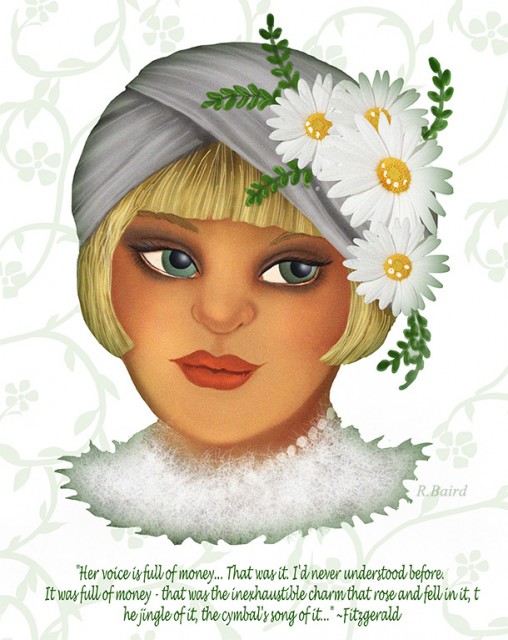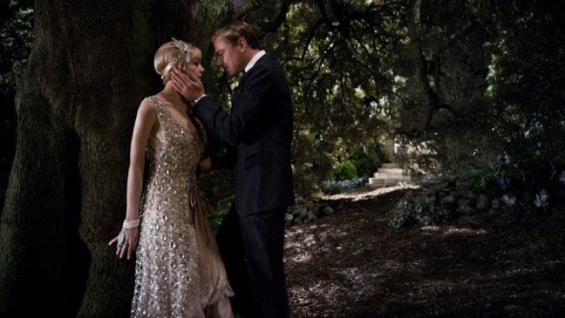I remember where I was and what I was doing when I first read
this generous reader's review of
Going Over in the
Guardian. This morning Twitter alerts me to this. I can promise you that my work has never appeared on a list that also features F. Scott, a writer whose portrait now hangs in my living room (for inspiration's sake). I'm going to hold onto this.
Thank you, Hawwa, etc.
The link is
here.
Thanks for talking to Boomerang Books about your outstanding first novel Laurinda (Black Inc.), Alice Pung. Thanks for interviewing me! You are well known for your excellent non-fiction, Unpolished Gem, Her Father’s Daughter and as editor of Growing Up Asian in Australia. Why have you sidestepped into YA fiction? Growing up, I went to five different high schools, […]

He knew that when he kissed this girl, and forever wed his unutterable visions to her perishable breath, his mind would never romp again like the mind of God. So he waited, listening for a moment longer to the tuning-fork that had been struck upon a star. Then he kissed her. At his lips’ touch she blossomed for him like a flower and the incarnation was complete. ~ The Great Gatsby

Just reading a piece about the release of the re-make of the latest re-make of"The Great Gatsby." Personally, a large proporation of the film remakes that I've seen rarely matched up to the original. This leads one - me - to wonder why producers/directors/film production companies feel the necessity to update a film that on the whole, was good orginally.
In the way of background information and according to Wikipedia, the story, "narrated by Nicholas "Nick" Carraway, a 30 year old Yale graduate and WWI veteran from the midwest, who takes a job in New York as a bond salesman. He rents a small house on Long Island, in the (fictional) village of West Egg, next door to the lavish mansion of Jay Gatsby, a mysterious millionaiare who holds extravagant parties."
Checking further with IMDB, the first film version dates back to 1926 and starred Warner Baxter as Jay Gatsby and Lois Wilson as Daisy Buchanan. Furthermore, much to my surprise, a stage production opened at the Ambassdor Theater on February 26, 1926, ran for 112 performances and directed by George Cukor.
The next film version in black and white, was made in 1949 starring Alan Ladd and Betty Fields. I always liked Ladd as an actor and although I never saw the film, most likely he did a decent job. The next incarnation in 1974 was the one that I saw and being an admirer/fan of Robert Redford, I thought it was...okay. Didn't particularly care for Mia Farrow as Daisy and thinking back, there was very little chemistry between the two stars.
Last but not least, it appears there was yet another version in 2000 (wasn't aware of this) with Mina Sorvino and one Toby Stephens in the lead roles.
That brings us up to the latest incarnation to be released in May 2013, starring Leonardo di Caprio and Carrie Mulligan. Somehow, di Caprio, at least in my mind, doesn't have that suave, sophisticated personna necessary to play Gatsby. Then again, who knows.
This is all leading up to the question originally posted here, as to the necessity of yet another re-make of the re-make of.... One re-make is acceptable or even two re-makes but five? The point being made here is that script writers should be searching for their own ideas, rather than turning out scripts based on the story lines and scripts created by other script writers.
In as far as the newest and hopefully the last version of this story, I'm going to pass but for people who are intrigued to know what the film is about, here is the trailer: http://www.imdb.com/title/tt1343092/?ref_=sr_1
The Great Gatsby, which has long been a staple on high school reading lists, is steadily moving up the bestseller chain. This could be a result of the upcoming movie starring Leonardo DiCaprio and Carey Mulligan. The movie was originally set to premiere at Christmas but has now been bumped back to summer 2013. The movie has an estimated budget of $127 million and is directed by Baz Luhrmann.


Most writers know that in addition to writing every day one needs also to continue reading regularly, including the best of the classics and also critically acclaimed contemporary work. But where to find all the necessary hours in a day? One strategy might be to better leverage the extra-curricula output of a growing number of colleges across the country that have added creative writing programs to their curriculum. Instructors working in these programs, often published writers motivated by a love of the writing craft, and perhaps also challenged to share their teaching skills with a larger student body than they might have in a classroom, have made available some excellent learning materials on the Internet and in periodicals published especially for writers. Much of the Internet material is free, accessible on the authors' blogs and home pages, and an access to author interviews and topical essays in periodicals is usually at only nominal cost. I've used both resources, and my favorite among the periodicals is
The Writer's Chronicle,' published by a professional association of those nationwide writing programs.
The great thing about most of the topical essays one finds in the periodicals is the critical spotlighting of material taken from the literature to illustrate the topic of an essay. You might want to read such an essay, let's say, "On the Use of Epiphanies in Fiction," because you've been interested in examples of how this has been done successfully. If it's a good essay, you're going to learn a few things about epiphanies, plus you may become interested in a new author, or a book you haven't had a chance to read yet, and which is listed in the references given by the writer for his essay. Now you've added to a focused reading list for material that meets your current interests and needs.
Pursuing this sort of directed reading search, I came across an essay discussion using examples from "
The Quiet American," by Graham Greene. I'd read other books by Greene and was reminded of things I liked about him from the examples the essay writer had chosen. Greene's fiction often has an engaging mix of political, spiritual, philosophical, and even comic elements. "
The Quiet American" has all but the comical. Greene uses a direct, linear style of storytelling, and doesn't load an otherwise complex story with any more exposition than is necessary up to each stage of events.
The story is set against a backdrop of the twilight of French colonial rule in Vietnam, and the struggles of a communist-dominated Vietminh insurgency to overthrow the French. The United States, critical of French imperialism but fearful of a communist victory in southeast Asia, seeks to undermine communist power in the insurgency by supporting rival warlord factions.
The core tension of the story is about the efforts of an aging, British journalist, Thomas Fowler, to hold on to his relationship with a young, Vietnamese girl he loves, Phuong, after a young, American diplomat, Alden Pyle, meets and falls in love with her, and asks to marry her. Pyle can promise Phuong a security she'd love to have. Fowler, however, is dogged by a handicap: he already has a wife in Britain who won't give him a divorce, so he can't marry Phuong. He's fearful of losing her to Pyle, and of dying alone and pitiful.
Here are some random passages that are revealing of Greene's writing style:
(Priest)..."It's strange what fear does to a man."
(Fowler)..."It would neve

The Great Gatsby by F. Scott Fitzgerald
Man, what self-indulgent rubbish.
“I am so rich…I am so observant…My friends are so rich…My friends have great parties…Gatsby is so rich…Gatsby is so neat…”
So it’s a great story about the Jazz era. It wasn’t that great an era.
If I wanted to read about lame, rich, full of themself people going to parties, I’d pick up People magazine.
A bore.










